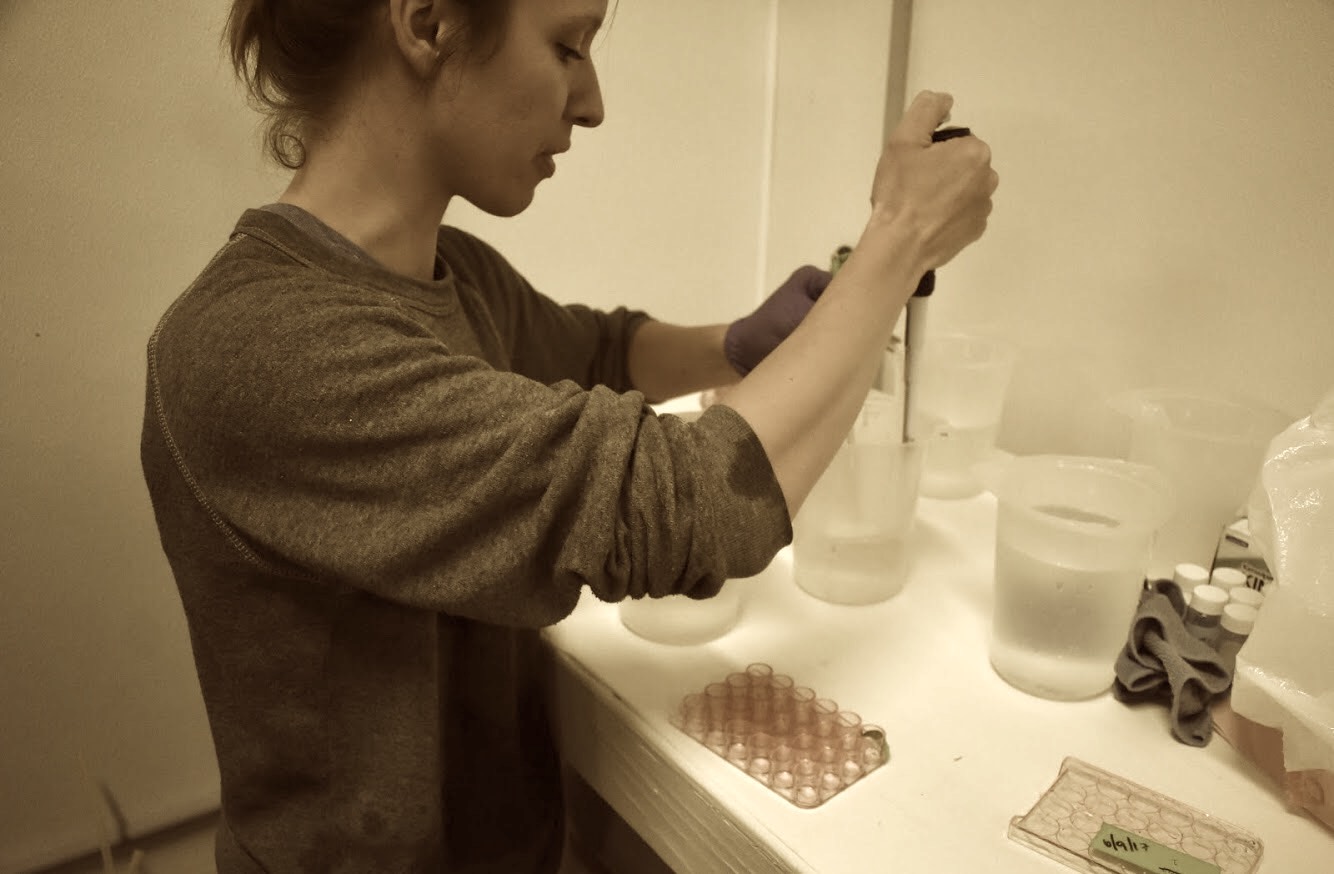Oly Sampling, post-OA
April 8th, 2017: Lots of sampling today with help from the Ladies of the Roberts Lab
Megan, Rhonda, Grace, Kaitlyn, Yaamini, and myself (shoot, we forgot to take a photo, but here’s us feeding my chickens oysters. We also terminated the OA stage of this project.
Time frame
Arrived @ the hatchery @ 9:30am, and finished by 5pm. Sampled 96 animals. Folks took ~45 min lunch. I had to label a ton of tubes over lunch and in the afternoon, which slowed me down.
Collected water chemistry upon arrival.
All water chemistry data is being digitized in a Google Doc, Manchester Water Chemistry Data
Sampled!
Sampled from SN, NF & HL populations, all treatments and replicates. We shucked & pulled 5 tissues samples per animal:
- Flash-frozen in ethanol/dry ice bath, and stored in -80 in Rick’s Lab: Mantle (M), Ctenidia (C), Adductor (A)
- Excess tissue (any type) for DNA (E), stored in 1 mL ethanol and placed in fridge in rm 209
- Visceral Mass for Histology, oriented with right valve facing up, left valve facing down - the section will be taken from the left-valve side, which is the side not likely injured by the act of shucking.
| Sample Label | Population | Treatment | # Sampled |
| SN-6-16 to SN-6-24 | SN | chilled T, low pH | 9 (3/rep) |
| SN-6-26 to SN-6-33 | SN | chilled T, ambient pH | 9 (3/rep) |
| SN-10-16 to SN-10-24 | SN | ambient T, low pH | 9 (3/rep) |
| SN-10-25 to SN-10-33 | SN | ambient T, ambient pH | 9 (3/rep) |
| NF-6-16 to NF-6-24 | NF | chilled T, low pH | 9 (3/rep) |
| NF-6-25 to NF-6-33 | NF | chilled T, ambient pH | 9 (3/rep) |
| NF-10-16 to NF-10-24 | NF | ambient T, low pH | 9 (3/rep) |
| NF-10-25 to NF-10-33 | NF | ambient T, ambient pH | 9 (3/rep) |
| HL-6-10 to HL-6-15 | HL | chilled T, low pH | 6 (2/rep) |
| HL-6-16 to HL-6-21 | HL | chilled T, ambient pH | 6 (2/rep) |
| HL-10-10 to HL-10-15 | HL | ambient T, low pH | 6 (2/rep) |
| HL-10-15 to HL-10-21 | HL | ambient T, ambient pH | 6 (2/rep) |
Histology Samples - Cassette Key
There were 2 “SN-6-29” tissues listed on my original key; one of them is SN-6-27, but I don’t know which one; the two samples have simliar weight, so I’m not sure if I’ll be able to parce out which one is which.

Terminated CO2 injections
Kept all animals in existing setup, simply turned off CO2 injections via control panel, and disconnected CO2 line from header.
What’s with the worms?
Because we were finding various polychaetes in our tanks during the OA experiment, likely hitch-hikers on the C. gigas oysters, we were told by Dr. Chelsea Wood to watch out for a few signs of parasitic worms, such as: blisters on the inner shell that can “pop”, worm tunnesl that penetrate the shell, etc. In my Oly’s we found a few dead oysters with obvious worm activity. Called and spoke with Ryan Crim and he said that small red worms are common in Oly shells, sometimes they penetrate the shell and they often find worm larvae within the Oly larvae. He isn’t sure how these worms actually affect Oly’s, nor what might exacerbate their effect. We should consider exploring worm activity in Ostrea lurida.




